Home>Garden Essentials>What Kind Of Grass Seed Do I Need
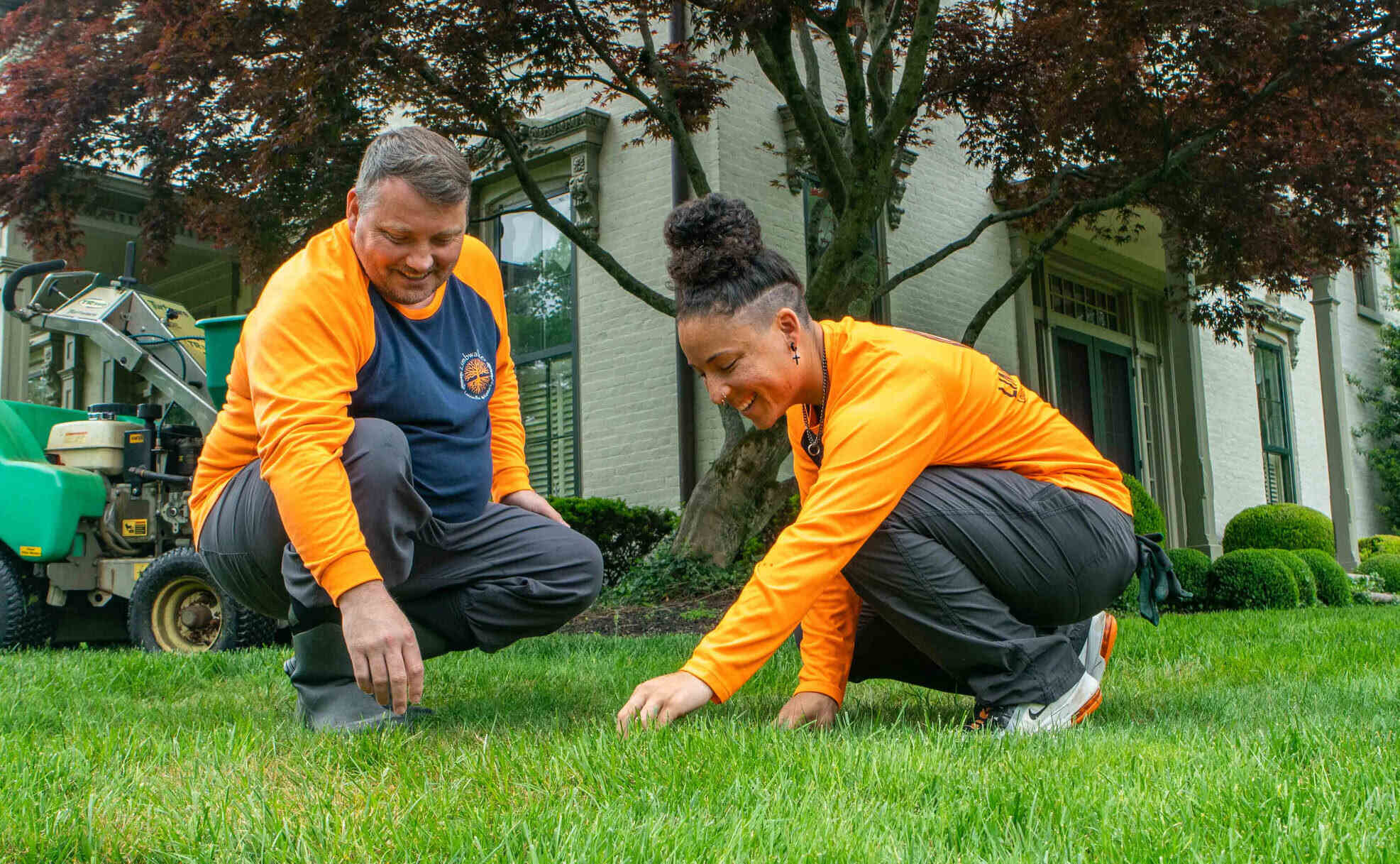

Garden Essentials
What Kind Of Grass Seed Do I Need
Modified: April 23, 2024
Find out which type of grass seed is best for your garden. Get expert advice on choosing the right kind of grass seed for your lawn.
(Many of the links in this article redirect to a specific reviewed product. Your purchase of these products through affiliate links helps to generate commission for Storables.com, at no extra cost. Learn more)
Introduction
Welcome to the exciting world of gardening! One of the first steps to creating a lush and vibrant lawn is selecting the right grass seed. If you’re new to gardening or simply unfamiliar with the wide variety of grass seeds available, it can be overwhelming to determine which type is best suited for your lawn. But fear not! In this article, we will delve into the different types of grass seeds, factors to consider before making your choice, and ultimately help you select the perfect grass seed for your specific needs.
Understanding the characteristics of different grass seed varieties will enable you to make an informed decision when it comes to your lawn. Factors such as climate, soil type, maintenance requirements, and personal preferences all play a role in determining which type of grass seed will thrive the most in your outdoor space.
There are several common types of grass seeds, including warm-season grass seeds, cool-season grass seeds, transition zone grass seeds, and native grass seeds. Each type has its own set of advantages and considerations, so it’s important to familiarize yourself with these options before making a selection.
When selecting the right grass seed for your lawn, keep in mind that not all grass seeds are created equal. Different varieties vary in terms of their growth habits, tolerance to drought and disease, and aesthetic appeal. By understanding the unique qualities of each type, you can choose a grass seed that aligns perfectly with your specific requirements and preferences.
Whether you’re looking to achieve a vibrant green lawn in the hot summer months or a hardy and resilient turf during the cool winter season, there’s a grass seed out there that is perfect for your needs. By considering the factors that are specific to your region and the unique characteristics of different grass seed varieties, you can confidently select the right grass seed to transform your outdoor space into a lush and inviting oasis.
So, grab your gardening gloves and let’s dive into the wonderful world of grass seeds. Get ready to learn about the different types available and discover the secrets to selecting the perfect grass seed that will turn your lawn into a stunning showcase of nature’s beauty.
Key Takeaways:
- Choose the right grass seed by considering climate, soil, and maintenance needs. Native grasses are low-maintenance and eco-friendly, while warm-season and cool-season grasses thrive in specific climates.
- Assess your lawn’s climate, soil, and usage to select the best grass seed. Consult local experts and review seed labels for high-quality options. Proper maintenance is crucial for a vibrant and healthy lawn.
Read more: What Kind Of Nail Gun Do I Need For Decking
Understanding Different Types of Grass Seeds
When it comes to selecting the right grass seed for your lawn, it’s important to understand the different types available and their unique characteristics. Grass seeds can be broadly categorized into warm-season grass seeds, cool-season grass seeds, transition zone grass seeds, and native grass seeds.
Warm-season grass seeds thrive in hotter climates and are known for their ability to tolerate drought and high temperatures. They typically have a dormant period during the cooler months and exhibit peak growth during the summer season. Examples of warm-season grass seeds include Bermuda grass, Zoysia grass, and Bahiagrass. These grasses are known for their dense growth, excellent wear tolerance, and ability to withstand heavy foot traffic.
Cool-season grass seeds, on the other hand, are best suited for regions with cooler temperatures and moderate rainfall. They exhibit optimal growth during the spring and fall seasons, and some varieties can withstand mild winter conditions. Popular cool-season grass seeds include Kentucky bluegrass, perennial ryegrass, and tall fescue. These grasses are known for their beautiful, lush appearance and tolerance to colder temperatures.
In the transition zone, where both hot summers and cold winters are experienced, selecting the right grass seed can be a bit more challenging. Transition zone grass seeds need to be able to handle the extreme temperature fluctuations and varying weather conditions. Examples of grass seeds that thrive in this region include tall fescue, zoysia grass, and Bermuda grass varieties that are well-adapted to handle the changing climate.
For those looking to establish a lawn that showcases the natural beauty of the local region, native grass seeds are an excellent choice. Native grasses are well-suited to the specific ecological conditions of a particular area, making them highly adaptable and resilient. They require less maintenance, water, and fertilizer compared to non-native grasses. Examples of native grass seeds include buffalo grass, blue grama grass, and switchgrass.
Now that you have a basic understanding of the different types of grass seeds, it’s important to consider various factors before making a final decision. Factors such as climate, soil type, maintenance requirements, and the intended use of your lawn will all influence the type of grass seed that will thrive in your outdoor space. By considering these factors and selecting the appropriate grass seed, you’ll be on your way to achieving a vibrant and healthy lawn that will be the envy of the neighborhood.
Factors to Consider Before Choosing Grass Seeds
Choosing the right grass seed for your lawn involves careful consideration of various factors. By evaluating these key factors, you can make an informed decision and select the grass seed that will thrive in your specific environment. Here are some important factors to consider before making your choice:
Climate: The climate of your region is a crucial factor in determining the best grass seed for your lawn. Consider the average temperature range, rainfall patterns, and the length of the growing season. Different grass seed varieties have different temperature and moisture requirements, so choose a type that is suitable for the local climate.
Soil Type and pH: The soil composition in your lawn plays a significant role in the success of your grass seed. Some grasses prefer sandy soils, while others thrive in clay or loamy soils. Additionally, consider the soil pH level, as different grasses have different tolerances to acidic or alkaline conditions. Conduct a soil test to determine the pH level and amend the soil if necessary.
Maintenance Requirements: Before choosing a grass seed, consider how much time and effort you are willing to dedicate to lawn maintenance. Some grass varieties require more frequent mowing, watering, and fertilizing, while others are more low-maintenance. Be realistic about your ability to commit to the necessary upkeep for each type of grass seed.
Intended Use of the Lawn: Determine how you plan to use your lawn. Will it primarily be an area for children and pets to play, or do you envision it as a peaceful space for relaxation and aesthetics? Different grass seed varieties have varying levels of tolerance to foot traffic and wear, so choose one that aligns with your intended use.
Shade and Sunlight: Assess the amount of shade and sunlight your lawn receives throughout the day. Some grasses thrive in full sun, while others are more shade-tolerant. Consider the specific lighting conditions of your lawn and choose a grass seed that can thrive in those conditions.
Disease and Pest Resistance: Investigate the disease and pest resistance of different grass seed varieties. Some grasses naturally have better resistance to common lawn diseases and pests, reducing the need for chemical treatments. Consider any prevalent issues in your area and select a grass seed variety that is known for its resistance to those specific challenges.
Budget: Lastly, consider your budget. Some grass seed varieties may be more expensive than others. Factor in the cost of the seed itself, as well as any additional maintenance requirements, such as fertilizers or watering systems.
By evaluating these important factors and weighing your priorities, you can confidently choose the right grass seed that suits your lawn’s needs. This thoughtful approach will ensure that your lawn thrives and remains healthy, creating a beautiful outdoor space for you to enjoy for years to come.
Common Types of Grass Seeds
When it comes to selecting the right grass seed for your lawn, it’s helpful to familiarize yourself with some of the most common types available. Each type of grass seed has its own unique characteristics and benefits, allowing you to choose the one that best suits your lawn’s needs. Let’s explore some of the most popular types of grass seeds:
Kentucky Bluegrass: Kentucky Bluegrass is a cool-season grass seed that is known for its beautiful deep, dark green color and fine texture. It has excellent tolerance to cold temperatures and is widely used in regions with cool climates. Kentucky Bluegrass establishes a dense and lush lawn, making it ideal for residential lawns and areas with moderate foot traffic.
Perennial Ryegrass: Perennial Ryegrass is another cool-season grass seed that germinates quickly and establishes rapidly. It has a medium-coarse texture and is known for its strong wear tolerance and ability to recover from damage. Perennial Ryegrass is often used for overseeding existing lawns, as it adds strength and resilience.
Tall Fescue: Tall Fescue is a cool-season grass seed with deep roots, making it highly tolerant to drought and heat stress. It has a coarse texture and is known for its ability to withstand heavy foot traffic. Tall Fescue is commonly used in areas with a mix of sun and shade and is an excellent choice for lawns with challenging growing conditions.
Bermuda Grass: Bermuda Grass is a warm-season grass seed that thrives in hot climates and full sun. It has excellent wear tolerance and recovers quickly from damage. Bermuda Grass is known for its low maintenance requirements and its ability to withstand drought. It is often used in lawns, sports fields, and golf courses.
Zoysia Grass: Zoysia Grass is a warm-season grass seed that is highly versatile and adapts well to a range of soil types. It has a medium texture and excellent tolerance to heat and drought. Zoysia Grass forms a dense turf and has a high tolerance for foot traffic, making it a popular choice for lawns, parks, and recreational areas.
Buffalo Grass: Buffalo Grass is a native warm-season grass seed that is well-adapted to dry climates and low-maintenance lawns. It has a fine texture and a unique ability to go dormant during periods of drought, requiring less water compared to other grass types. Buffalo Grass is often found in natural settings and is favored for its low water and maintenance requirements.
Fescue Grass: Fescue Grass is a cool-season grass seed that encompasses several varieties, including fine fescue, creeping red fescue, and chewings fescue. Fescue grasses have a fine to medium texture and excellent shade tolerance. They are often used in regions with cooler temperatures and are known for their ability to grow in both sun and shade conditions.
These are just a few of the many grass seed varieties available to choose from. Each type has its own unique set of characteristics, allowing you to find the perfect match for your lawn based on your specific needs and preferences. Understanding the different types of grass seeds will help you make an informed decision and create a vibrant and healthy lawn that you can enjoy for years to come.
Warm-Season Grass Seeds
Warm-season grass seeds are the perfect choice for areas with hot and humid climates. These grasses thrive in temperatures above 80 degrees Fahrenheit and can tolerate drought and intense sunlight. They have a dormant phase during winter but exhibit optimal growth during the summer months. Warm-season grass seeds are commonly used in southern regions where cool-season grasses struggle to survive. Let’s explore some popular warm-season grass seeds:
Bermuda Grass: Bermuda grass is a popular warm-season grass seed known for its excellent heat and drought tolerance. It has a fine to medium texture and forms a dense turf. Bermuda grass withstands heavy foot traffic, making it a popular choice for athletic fields and golf courses. It requires full sun and regular fertilization to maintain its vibrant green color.
Zoysia Grass: Zoysia grass is another warm-season grass seed that thrives in hot and humid climates. It has a medium texture and is highly adaptable to different soil types. Zoysia grass forms a dense, weed-resistant turf and has good tolerance to wear and tear. This grass seed is suitable for both residential lawns and commercial landscapes.
Bahiagrass: Bahiagrass is a warm-season grass seed that is well-suited for areas with sandy soils and low fertility. It has a coarse texture and good drought tolerance. Bahiagrass is known for its ability to establish quickly and survive in high-traffic areas. It is commonly used in coastal regions and roadside plantings.
Centipede Grass: Centipede grass is a warm-season grass seed that requires less maintenance compared to other varieties. It has a medium texture and demonstrates good tolerance to heat and drought. Centipede grass is known for its low nitrogen requirements and slow-growing nature, making it ideal for low-maintenance lawns.
St. Augustine Grass: St. Augustine grass is a warm-season grass seed that is widely used in coastal areas. It has a coarse texture and thrives in humid climates. St. Augustine grass forms a dense, lush turf and performs well in shaded areas. It requires regular watering and has moderate tolerance to foot traffic.
When considering warm-season grass seeds, it’s important to consider the specific environmental conditions of your region. Take into account factors such as average temperature, rainfall patterns, and soil type. Additionally, consider the level of maintenance you are willing to commit to, as some warm-season grasses require more frequent mowing and watering than others.
Overall, warm-season grass seeds offer excellent heat tolerance and resilience in areas with high temperatures. By selecting the appropriate warm-season grass seed for your lawn, you can create a beautiful, lush, and green turf that will thrive in hot climates.
When choosing grass seed, consider the climate and soil type of your area. For sunny spots, choose a warm-season grass like Bermuda or Zoysia. For shady areas, opt for a cool-season grass like Fescue or Ryegrass.
Cool-Season Grass Seeds
Cool-season grass seeds are ideal for regions with cooler climates and fluctuating temperatures. These grasses are known for their ability to grow actively during the spring and fall, and some varieties can withstand mild winter conditions. Cool-season grasses typically have a deep green color and a fine texture. They are commonly used in regions where warm-season grasses struggle to thrive. Let’s explore some popular cool-season grass seeds:
Kentucky Bluegrass: Kentucky bluegrass is a common cool-season grass seed known for its beautiful appearance and dense growth. It has excellent cold tolerance and a fine texture. Kentucky bluegrass forms a lush turf and has good wear resistance. It thrives in areas with moderate temperatures and receives sufficient rainfall.
Perennial Ryegrass: Perennial ryegrass is another popular cool-season grass seed that germinates quickly and establishes rapidly. It has a medium-coarse texture and is known for its rapid growth and strong wear tolerance. Perennial ryegrass is often used for overseeding existing lawns or in areas that require quick establishment and temporary coverage.
Tall Fescue: Tall fescue is a cool-season grass seed known for its adaptability to different soil types and its ability to withstand a wide range of environmental conditions. It has a coarse texture and forms a deep-rooted turf. Tall fescue is known for its excellent heat and drought tolerance, making it a popular choice for regions with challenging growing conditions.
Fine Fescue: Fine fescue encompasses several different species of cool-season grass seeds, including red fescue, chewings fescue, and hard fescue. These grasses have fine to medium textures and are known for their shade tolerance and low-maintenance requirements. Fine fescues are often used in areas with cooler temperatures and less sunlight.
Creeping Bentgrass: Creeping bentgrass is a cool-season grass seed known for its fine texture and dense growth habit. It thrives in cool, moist environments and has exceptional tolerance to low mowing heights. Creeping bentgrass is commonly used on golf courses and areas that require a manicured appearance.
When considering cool-season grass seeds, it’s important to understand the specific climate and conditions of your region. Take into account factors such as average temperature, rainfall patterns, and the amount of sunlight your lawn receives. Additionally, consider the level of maintenance you are willing to commit to, as some cool-season grasses may require more frequent mowing and watering.
Cool-season grass seeds offer the advantage of active growth during the spring and fall, providing a lush and vibrant lawn during cooler periods. By selecting the appropriate cool-season grass seed for your lawn, you can enjoy a beautiful and healthy turf that thrives in cooler climates.
Transition Zone Grass Seeds
The transition zone is an area that experiences both hot summers and cold winters, making it challenging to maintain a healthy and thriving lawn. In this region, selecting the right grass seed requires careful consideration of the specific climate and conditions. Transition zone grass seeds are specially chosen to withstand the extreme temperature fluctuations and varying weather patterns of this unique region. Let’s explore some common transition zone grass seeds:
Tall Fescue: Tall fescue is a popular grass seed choice for the transition zone due to its adaptability and tolerance to a wide range of growing conditions. It has a coarse texture and forms a deep-rooted turf. Tall fescue exhibits excellent heat and drought tolerance, making it suitable for the hot summers of the transition zone. It can also withstand colder temperatures during the winter months.
Buffalo Grass: Buffalo grass is a native warm-season grass seed that is well-suited to the transition zone. It has a fine texture and exhibits excellent heat and drought tolerance. Buffalo grass requires less water and maintenance compared to other grass types, making it an ideal choice for low-maintenance lawns in the region.
Zoysia Grass: Zoysia grass is another warm-season grass seed that performs well in the transition zone. It has a medium texture and adapts well to various soil types. Zoysia grass exhibits good heat and drought tolerance, allowing it to thrive in the hot summers of the region. It can also handle mild winter conditions, making it a versatile choice.
Bermuda Grass: Bermuda grass, known for its excellent heat and drought tolerance, can also be found in the transition zone. It has a fine to medium texture and forms a dense turf. Bermuda grass can handle both hot summers and mild winters, making it a common choice for lawns, parks, and athletic fields.
When selecting grass seed for the transition zone, it’s important to choose varieties that can handle both the hot summers and the cold winters of the region. Consider factors such as temperature extremes, rainfall patterns, and the soil type in your area. Additionally, assess your lawn’s specific conditions and maintenance requirements.
Transition zone grass seeds offer the advantage of adaptability to the challenging climate conditions of the region. By carefully selecting the appropriate grass seed, you can establish a healthy and vibrant lawn that thrives in both the scorching summers and the cold winters of the transition zone.
Native Grass Seeds
Native grass seeds are an excellent choice for homeowners who want to create a natural and sustainable lawn that is well-adapted to their local environment. These grasses are indigenous to specific regions and have evolved over time to withstand the local climate, soil conditions, and pest pressures. Native grasses offer numerous benefits, including low maintenance, water efficiency, and wildlife habitat support. Let’s explore some common native grass seeds:
Buffalo Grass: Buffalo grass is a native warm-season grass seed that is well-adapted to the drier regions of North America. It has a fine texture and is known for its ability to withstand drought conditions. Buffalo grass requires less water and maintenance compared to non-native grasses and is highly suitable for low-maintenance lawns or naturalized areas.
Blue Grama Grass: Blue grama grass is a native warm-season grass seed that thrives in the arid regions of the United States. It has a unique sod-forming growth habit and a fine texture. Blue grama grass is highly drought-tolerant and requires minimal irrigation. It is commonly used in natural landscapes, prairies, and xeriscapes.
Switchgrass: Switchgrass is a native warm-season grass seed that is commonly found in prairies and grasslands across the United States. It has a coarse texture and can grow up to several feet tall. Switchgrass is known for its long root system, which helps prevent soil erosion. It provides valuable wildlife habitat and is also used as a biofuel crop.
Little Bluestem: Little bluestem is a native warm-season grass seed that is native to prairies and open fields. It has a fine texture and exhibits a beautiful reddish-brown color during the fall. Little bluestem is adaptable to a wide range of soil conditions and offers excellent support for wildlife, particularly songbirds.
Canada Wildrye: Canada wildrye is a native cool-season grass seed that is found in various regions across North America. It has a coarse texture and forms a clumping growth habit. Canada wildrye is highly tolerant of drought and is often used in erosion control projects and reclamation efforts.
Native grass seeds offer several advantages over non-native varieties. They are well-adapted to local conditions, requiring less water, fertilizer, and pesticides. Native grasses also promote biodiversity by providing valuable habitat for pollinators, birds, and other wildlife. Additionally, they contribute to the preservation of regional ecosystems and can help restore natural landscapes.
When considering native grass seeds, research the specific species that are native to your region. Consider factors such as soil type, sunlight exposure, and water availability. Native grasses can be used for a variety of purposes, including lawns, prairie restoration, and erosion control. Embracing native grass seeds allows you to create a beautiful, sustainable, and environmentally-friendly lawn that supports the natural diversity of your region.
Selecting the Right Grass Seed for Your Lawn
Choosing the right grass seed is essential to establishing a healthy and vibrant lawn. By considering several factors, you can select the seed variety that best suits your specific needs and environmental conditions. Here are some important steps to guide you in selecting the right grass seed:
Step 1: Assess Your Lawn’s Climate: Evaluate the climate of your region, including temperature fluctuations, rainfall patterns, and the length of the growing season. Determine whether your area falls into a warm-season or cool-season grass zone. This information will help narrow down the suitable grass seed choices for your lawn.
Step 2: Evaluate Soil and Light Conditions: Understand your soil type, including its composition, drainage, and pH level. Certain grasses prefer sandy, loamy, or clay soils. Consider the amount of sunlight your lawn receives and whether it is predominantly in full sun or shade. Different grasses have varying shade tolerance, so choose accordingly.
Step 3: Identify Lawn Usage: Determine how you plan to use your lawn. Are you expecting heavy foot traffic? Will it primarily be a play area for kids and pets? Different grass seed varieties have varying wear tolerance and recovery capabilities. Select a seed that aligns with your lawn’s intended use.
Step 4: Consider Maintenance Requirements: Evaluate the amount of time and effort you can dedicate to lawn maintenance. Some grass seed varieties require more frequent mowing, watering, fertilizing, and pest control. Determine your willingness to commit to the necessary maintenance tasks for each type of grass seed.
Step 5: Research Grass Seed Varieties: Familiarize yourself with the different grass seed varieties available in your region. Research their specific characteristics, growth habits, disease resistance, and aesthetic appearance. Consider factors such as drought tolerance, cold hardiness, and overall adaptability to your local environment.
Step 6: Consult Local Experts: Seek advice from local garden centers, extension offices, or professional landscapers. These experts possess extensive knowledge about grass seed varieties that thrive in your specific region. They can provide valuable insights and recommendations based on local conditions and challenges.
Step 7: Review Seed Labels: Pay attention to the information provided on grass seed labels. Look for the purity percentage, germination rate, and any additional coatings or treatments applied to the seed. High-quality seed will produce better results and ensure a successful lawn establishment.
Step 8: Consider a Seed Blend or Mix: Depending on your lawn’s needs and goals, you might consider a seed blend or mix. These combinations of different grass seed varieties offer diversity and can enhance the overall performance and appearance of your lawn.
By following these steps and considering the specific needs of your lawn, you can confidently select the right grass seed for optimal results. Remember that choosing the correct grass seed is just the first step. Proper soil preparation, adequate watering, and meticulous maintenance are crucial for a successful and thriving lawn.
Read more: What Kind Of Weather Stripping Do I Need
Conclusion
Choosing the right grass seed is a critical step in creating a lush and beautiful lawn. By understanding the different types of grass seeds, considering your climate, evaluating soil conditions, and factoring in maintenance requirements, you can make an informed decision that will lead to a healthy and thriving lawn. Whether you live in a warm-season or cool-season grass zone, or in the challenging transition zone, there are grass seed options available to suit your specific needs.
Consider native grass seeds if you want to create a sustainable and eco-friendly lawn that supports local wildlife and requires less maintenance. Native grasses are well-adapted to the specific conditions of your region and can provide a natural and visually appealing landscape.
Remember to assess the intended use of your lawn and select a grass seed that can handle the level of foot traffic and wear and tear you expect. Additionally, take into account the amount of shade or sunlight your lawn receives and choose a grass seed variety that thrives under those conditions.
Consulting with local experts and conducting research on various grass seed varieties specific to your region can provide valuable insights and recommendations. Consider their advice and review seed labels to ensure that you choose high-quality seed that will contribute to a successful establishment and long-term health of your lawn.
Lastly, proper soil preparation and diligent maintenance are key factors in achieving a vibrant and healthy lawn. Regular watering, mowing, and fertilization, along with keeping an eye out for disease and pests, will help your grass seed thrive and maintain its lush green appearance.
By following these guidelines and selecting the right grass seed for your lawn, you can transform your outdoor space into a beautiful sanctuary for relaxation, play, and enjoyment. A healthy and well-maintained lawn not only enhances the appearance of your property but also provides a welcoming environment for family and friends to gather.
So, take the time to consider your options, evaluate your lawn’s needs, and choose the grass seed that aligns with your vision. With proper care and attention, your lawn will become a source of pride and joy, adding value to your home and creating a delightful outdoor oasis for years to come.
Frequently Asked Questions about What Kind Of Grass Seed Do I Need
Was this page helpful?
At Storables.com, we guarantee accurate and reliable information. Our content, validated by Expert Board Contributors, is crafted following stringent Editorial Policies. We're committed to providing you with well-researched, expert-backed insights for all your informational needs.
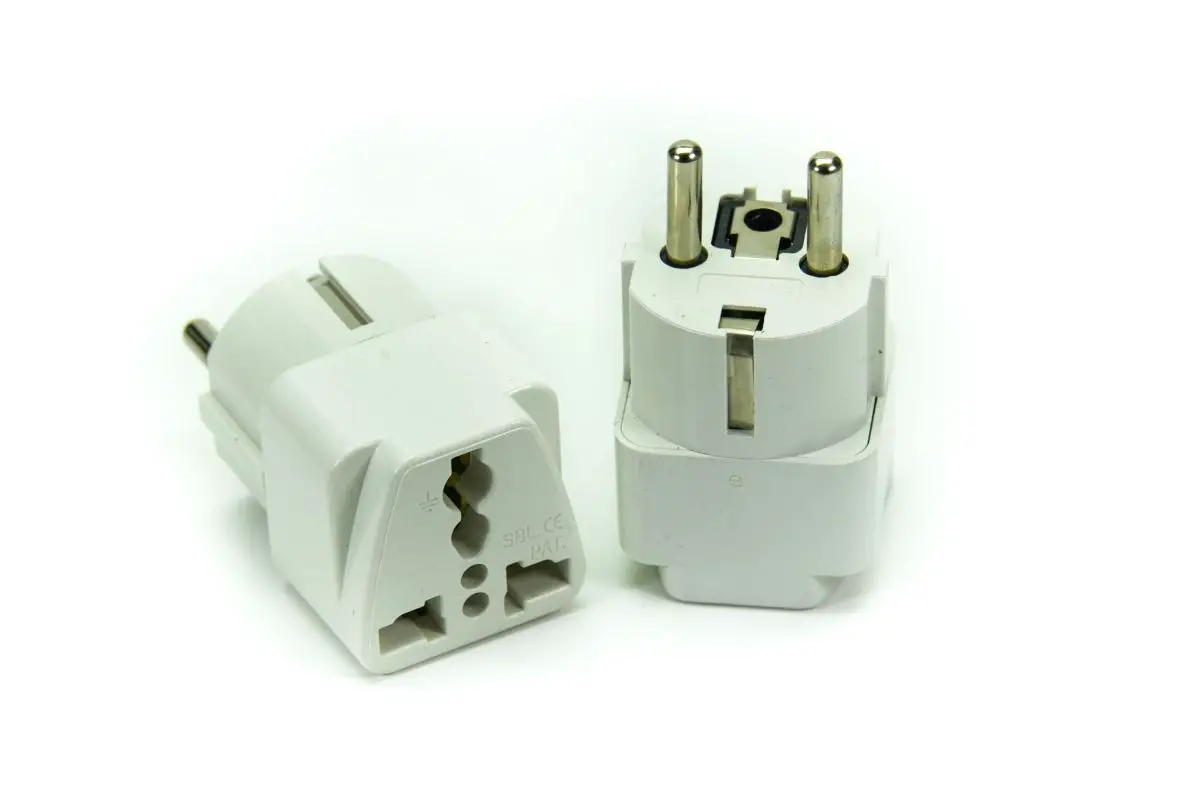
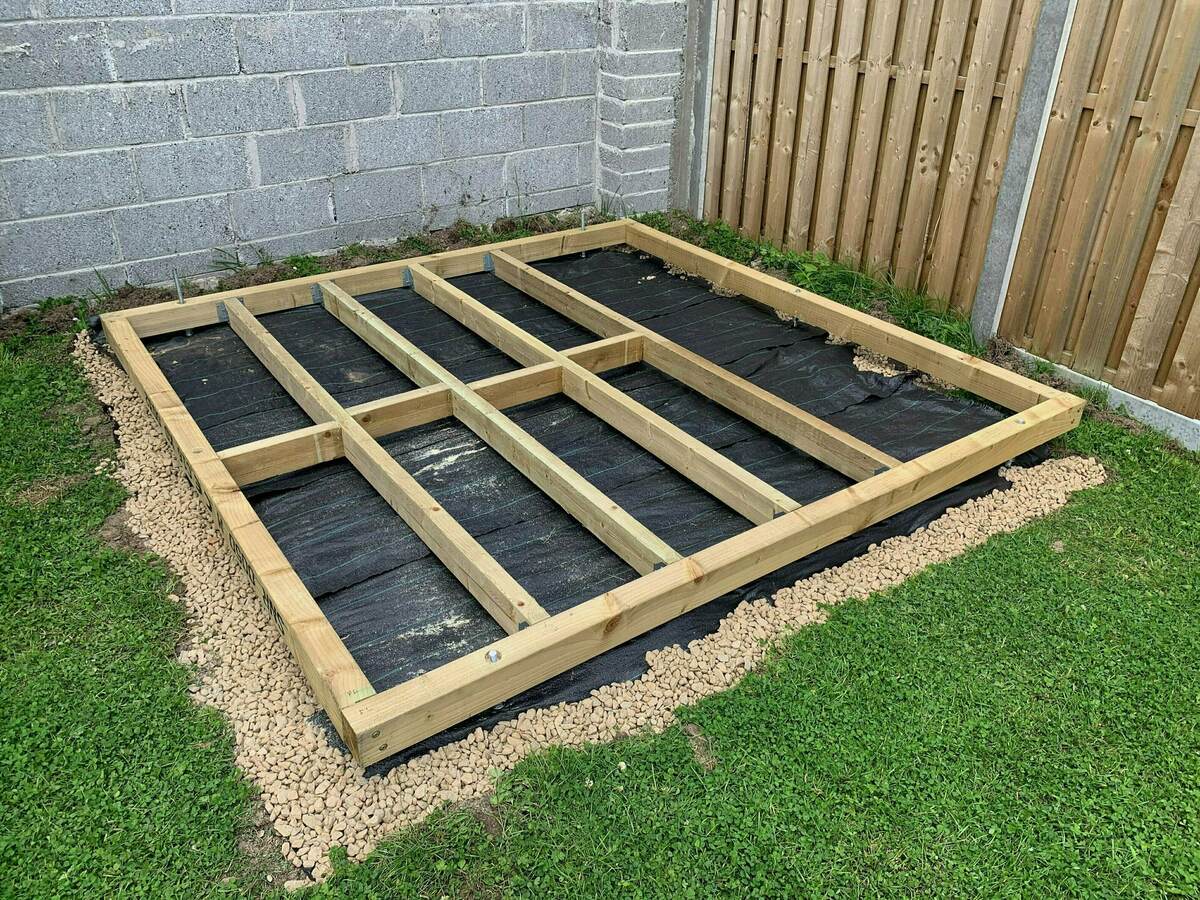






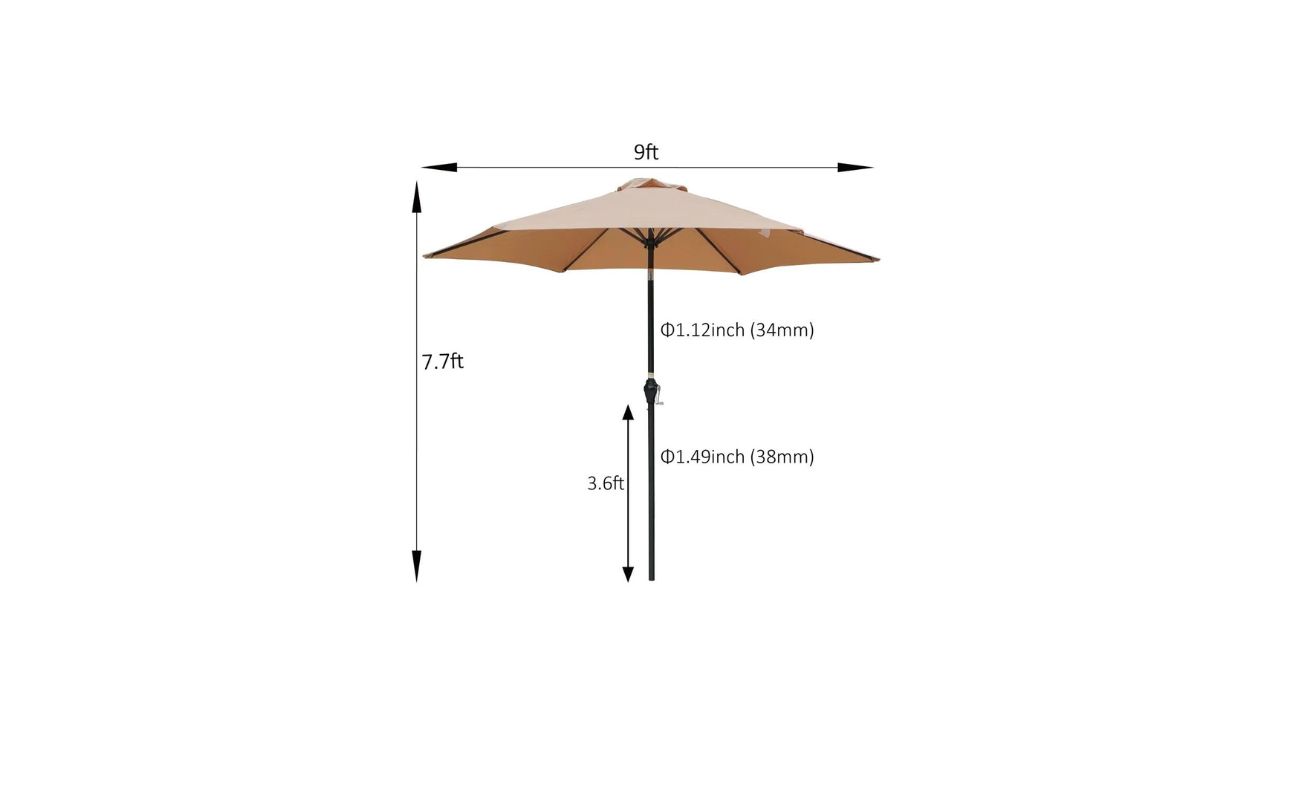

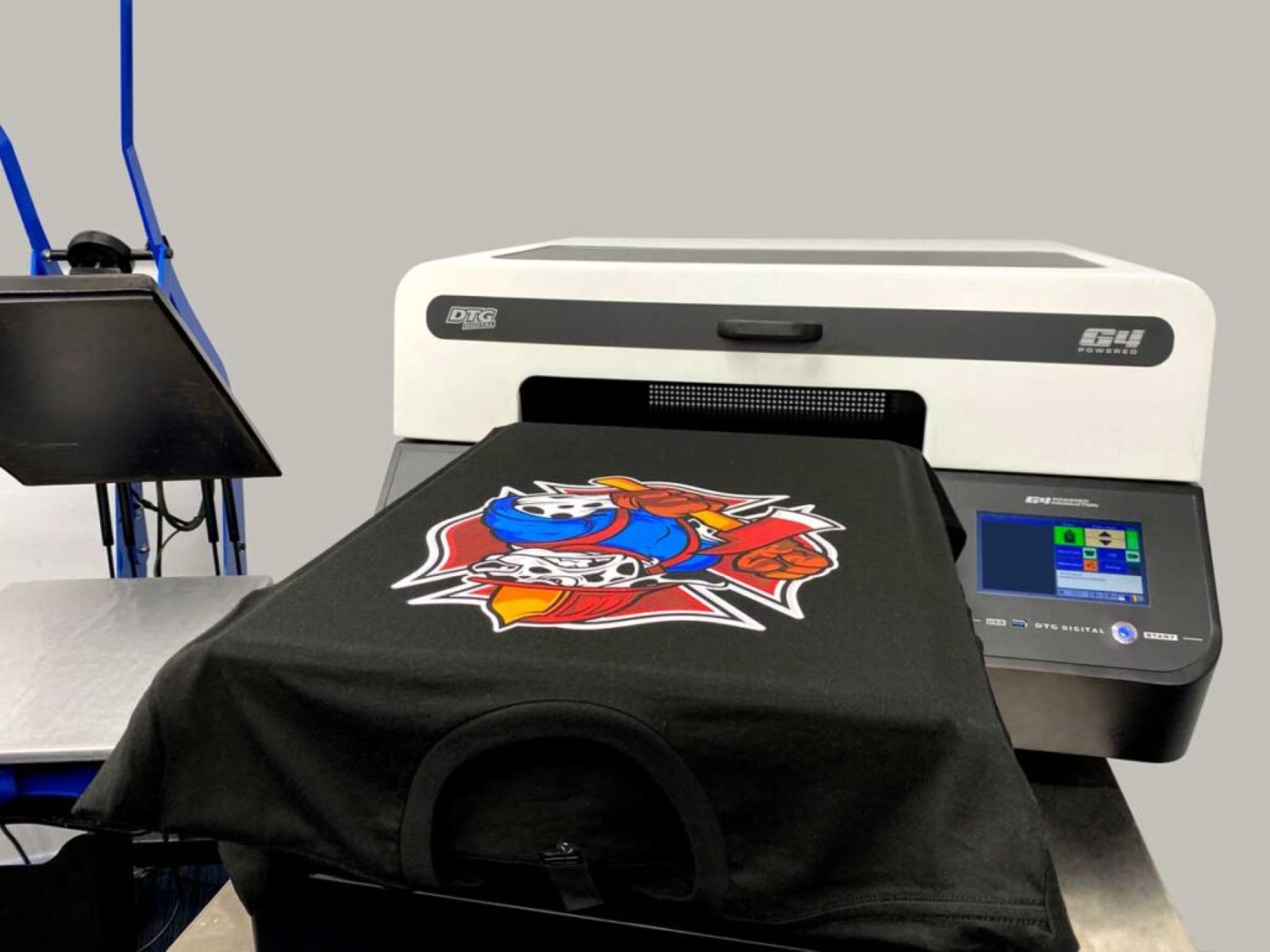

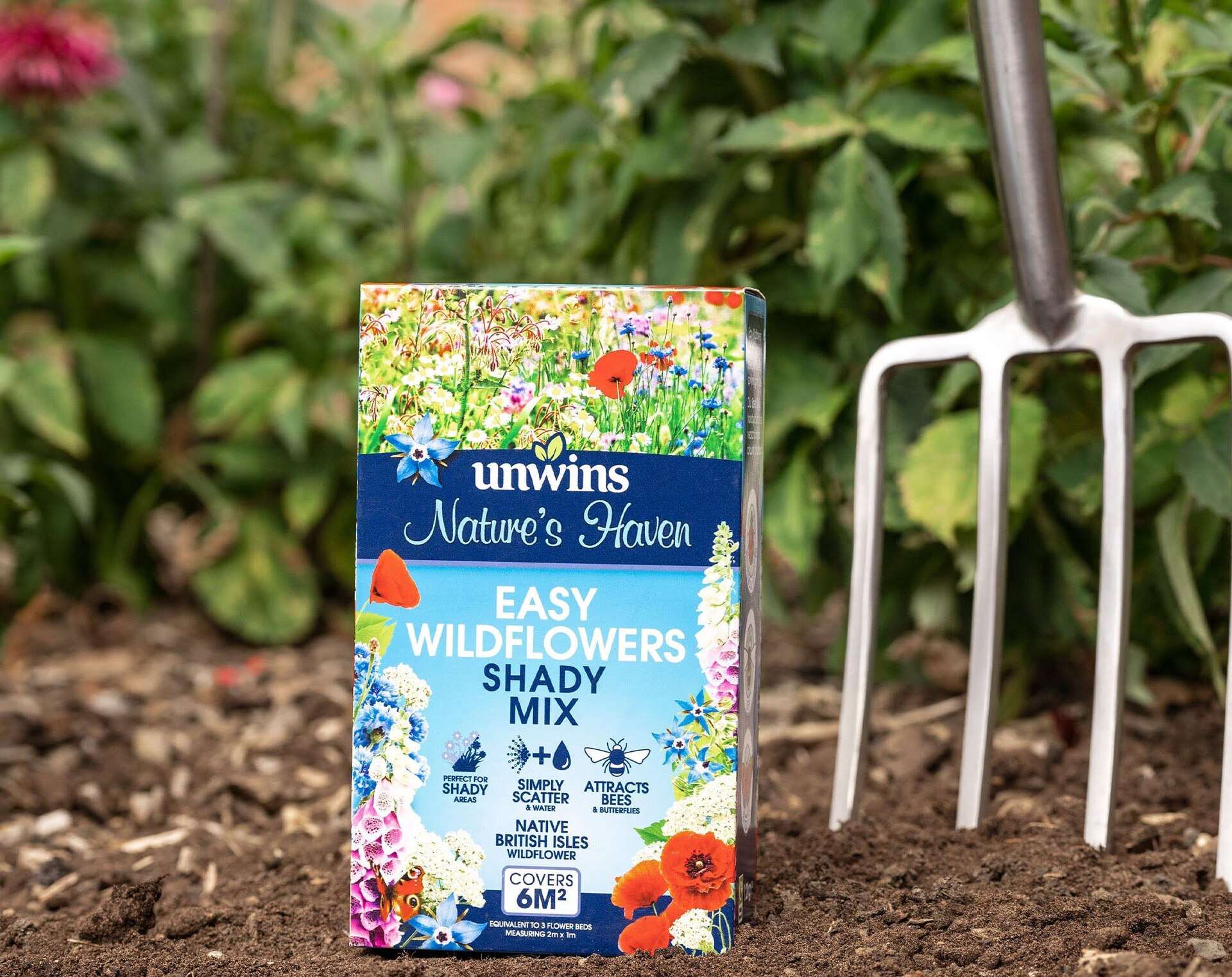

0 thoughts on “What Kind Of Grass Seed Do I Need”